My good friend, Jen, teaches a college level reading assessment class and asked if I could talk a bit on aligning intervention with data. Of course, I was thrilled she asked. I decided to take a grade level and focus on the assessments typically administered in the winter. All of our schools use the DIBELS Next as a school-wide screening assessment. So, I wanted to take that assessment and analyze individual student performance to see what information we can glean from this particular assessment and what type of “digging deeper” assessments and decisions for intervention we can make.
If your school administers the DIBELS Next and you subscribe to the online data system, you’ll receive a print out of your student’s performance. The distribution report and the class list report will “categorize” your students as “benchmark”, “strategic” or “intensive”. Knowing which category your students fall is helpful in a way, but you really need to analyze their test booklets to get the most of your data and to decide if and what type of intervention is needed. The goal for a first grader in the winter on the NWF assessment is 43 correct letter sequences (cls) and 8 whole word read (wwr). You may have two students who scored a 17 cls on the assessment, but have two very different needs in terms of intervention. Let’s take a look at a few students.
Ray
Ray’s NWF results show that he is attempting to blend, but is very inaccurate. Take a look at the types of errors he is making. He is confusing his short vowels sounds and reversing “b” and “d”. He is also confusing the following sounds: g/j, f/v and s/z. These are similar sounding phonemes. The f/v and s/z have the same placement of the lips and teeth, but only differ in voicing. Ray may not be hearing the differences between the sounds. Because of the large amount of errors, I would “dig deeper” with an assessment of his letters and sounds. In terms of intervention, I would incorporate the use of the phonics phones and mirrors when I work with him during small group instruction.
Click HERE to access a video on how to make and use a phonics phone.
David
Now let’s take a look of David’s performance. David is not blending yet as he is sounding the words sound-by-sound. He is not yet consistent with his vowel sounds and is demonstrating b/d reversals. David is not automatic with sound-symbol relationships. Because there are numerous errors, a letter-sound assessment is in order. Intervention will begin with the letters and sounds David has not mastered.
David’s intervention plan should include vowel discrimination activities for the /a/, /e/, and /i/. David would also benefit from the use of the blending board during intervention. This will not only help with blending but with sound-symbol automaticity.
Click HERE to download the free printable to make your own vowel sticks.
Breanna
Breanna is accurate with her sound-symbol correspondence. Her score of 34 cls falls below what is expected for the winter of first grade. Breanna is not blending automatically. When we listen to Breanna read text, she is sounding words sound-by-sound, so her reading is slow and labor intensive.
Breanna’s intervention should focus on sound-symbol automaticity and blending. Quick sound drills and the use of the blending board will be helpful.
Click HERE to access the blog post which contains a video on how to use a blending board, how to make your own and a link to download the free blending board cards.
Ashley
Ashley is very accurate with sound-symbol relationships. She is quickly saying the sounds and easily going back to blend the word. Her score of 89 cls places her above benchmark, but her score of 0 wwr falls within the intensive range. Ashley’s performance on the Rigby Running Records place her reading skills at the beginning second grade level. She is also reading at a rate of 56 wcpm on the DIBELS ORF assessment (benchmark: 23 wcpm).
It’s important to remember that the DIBELS Next is a screening assessment. You must look at all the student’s data to make a determination as to whether the student is at-risk for reading difficulties. Because Ashley’s running records assessment and ORF assessment fall above grade level, she is not having difficulty decoding or blending words in text, therefore, Ashley would not need skills-based intervention.
One of the books that I find very helpful in interpreting data and structuring intervention based on data is Susan Hall’s book I’ve DIBEL’d Now What? The book provides step-by-step instructions for anaylzing data much like what I did above with the NWF data. It also provides a framework for grouping students as well as providing different formats for providing the interventions.
It’s important to remember that the purpose of assessment is to guide instruction and intervention. Testing to “test” or filing the data in a filing cabinet is not helpful. Teachers who have the most success in terms of accelerating student achievement are those who understand the purpose of assessment and who can use the data to structure both whole class instruction as well as targeted intervention for struggling students.
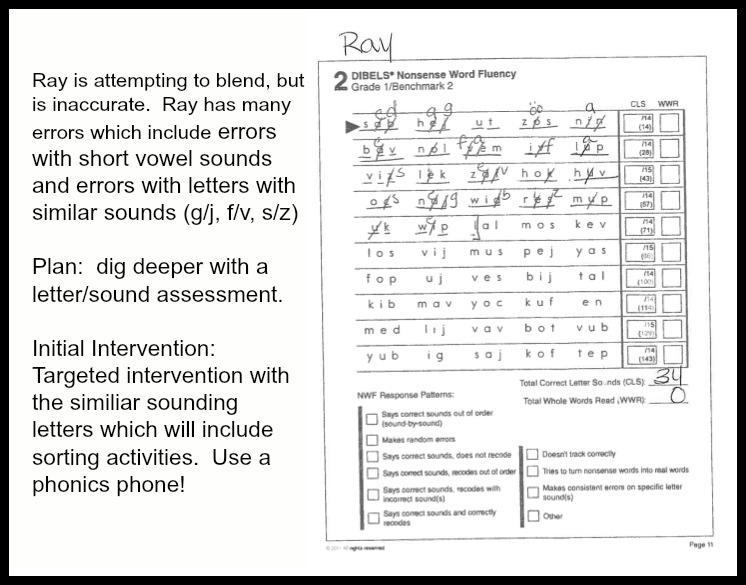

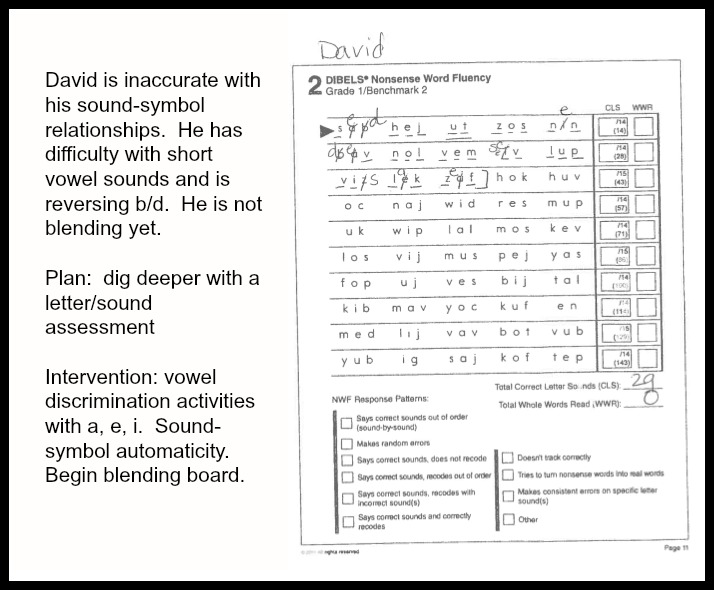
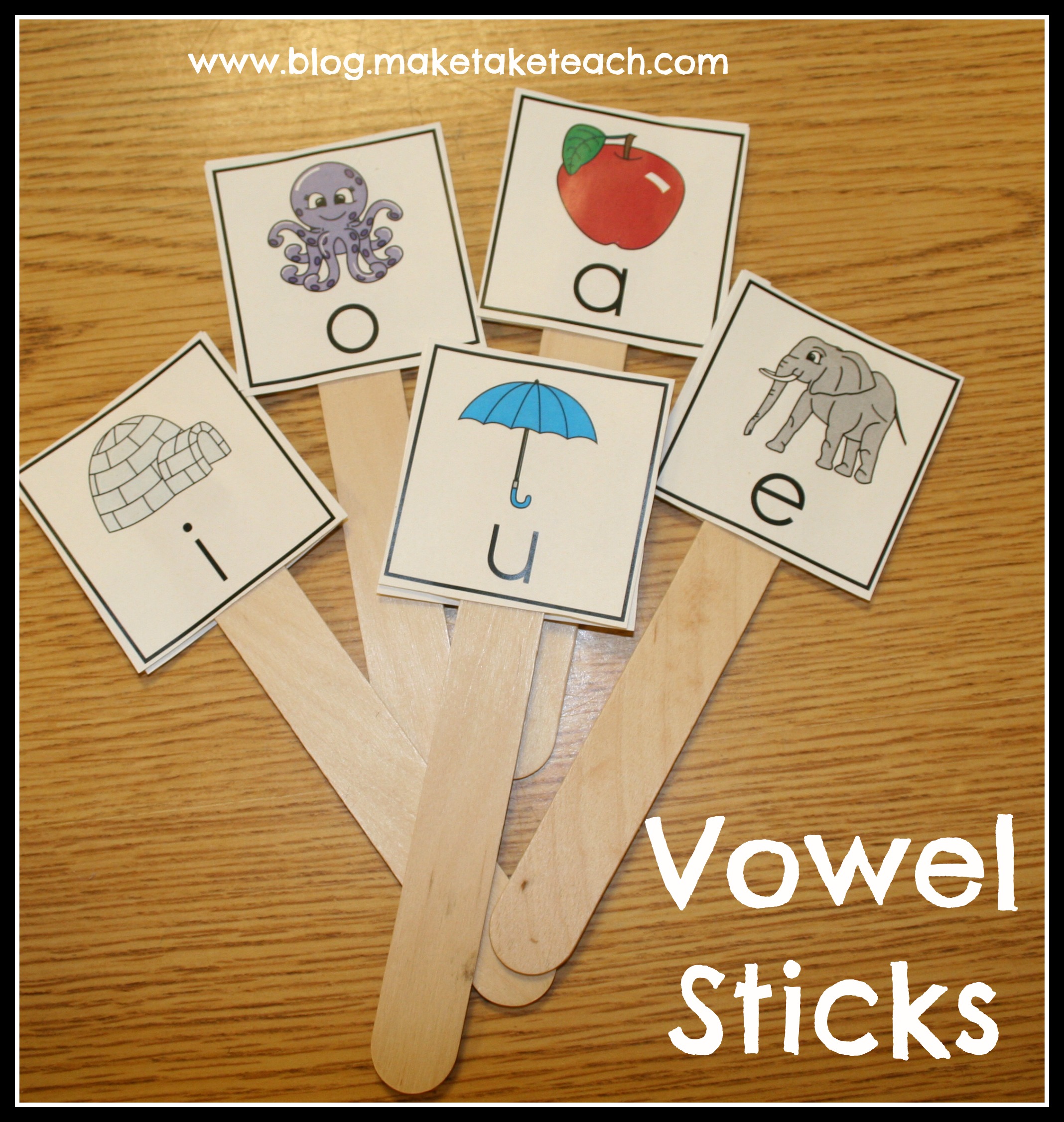
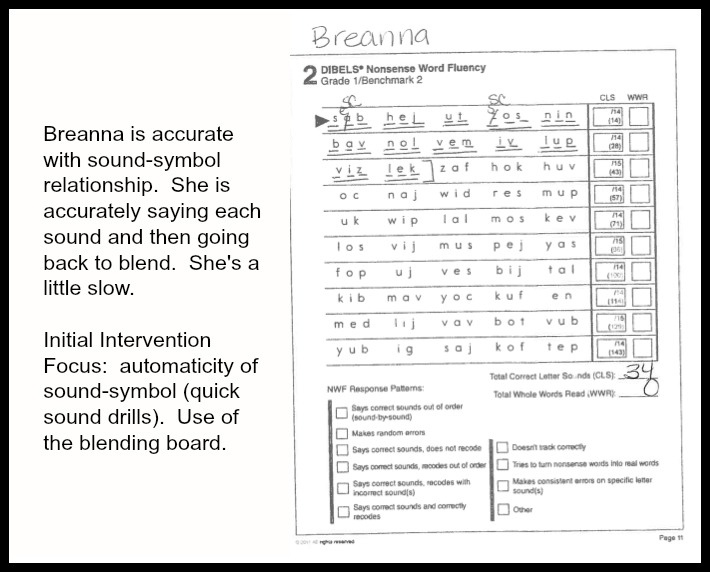
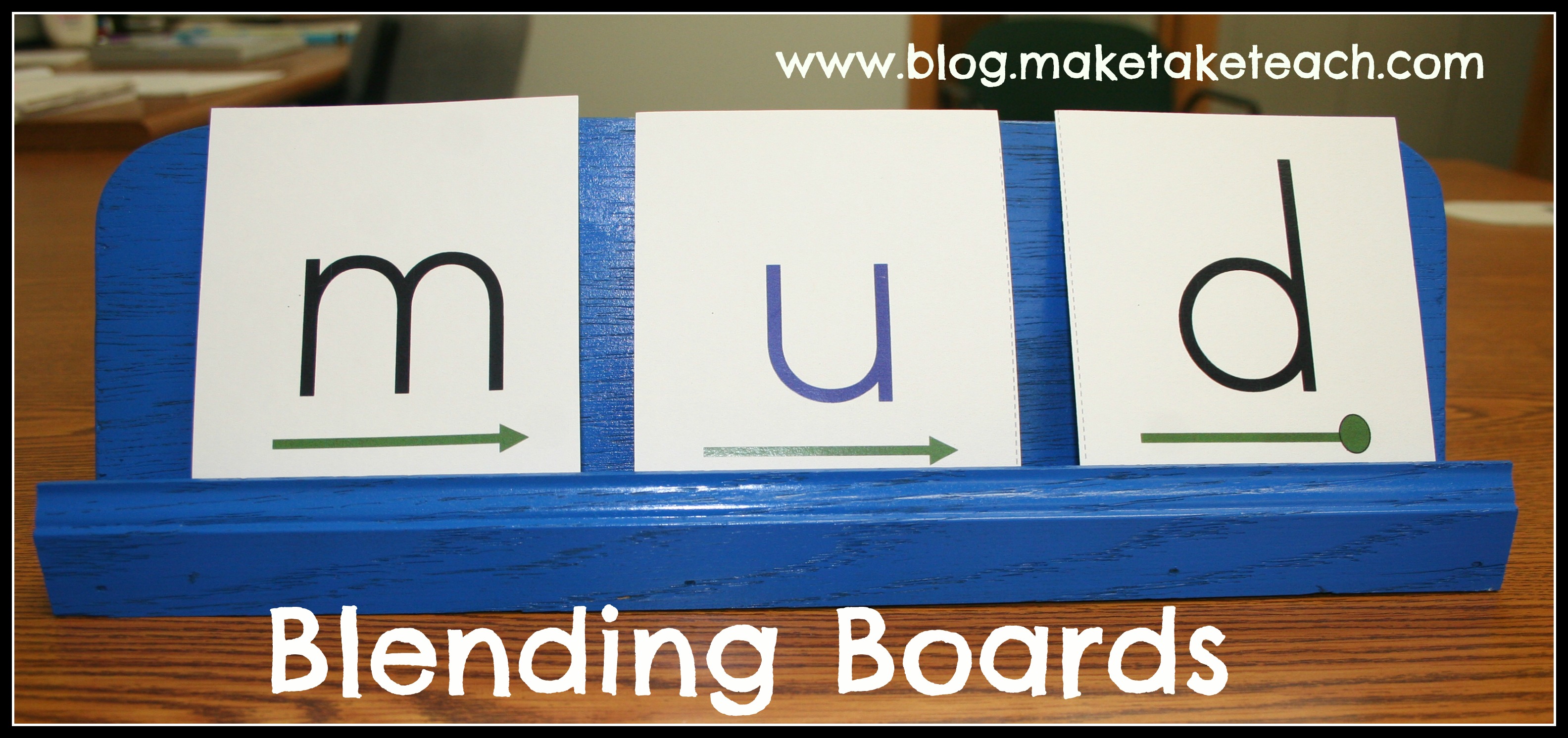

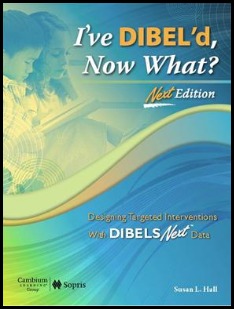
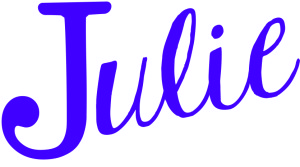


Leave a Reply